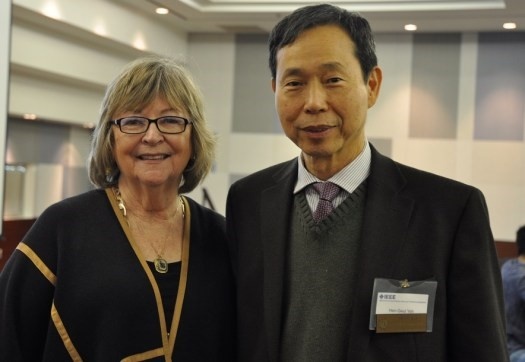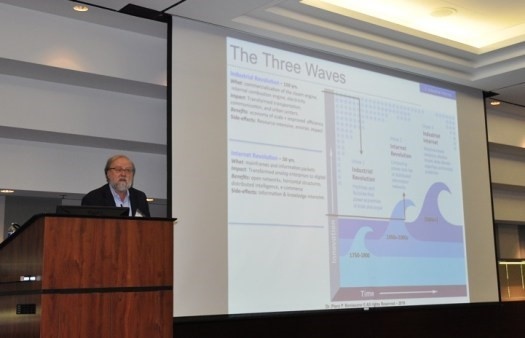IEEE Green Energy and Smart Systems Conference Marks 10th Year at CSULB

The IEEE Green Energy and Smart Systems Conference—an academic conference launched to advance a systems approach to integrating emerging technologies—marked its 10th year Monday at the Walter Pyramid at California State University Long Beach.
Featuring two tracks, nearly a dozen speakers, and 32 presentations, the conference two years ago was expanded to include a daylong workshop. That contrasted with one track and 10 presentations for the inaugural conference in 2010.
Conference chair Henry Yeh, chair of the CSULB Electrical Engineering Department, welcomed attendees to the 10th annual event. Topics represented the breadth of green energy technologies—analytics, electric vehicle integration, energy storage, load balancing, neural networks, programmable turbines, smart grids, and zero-emission vehicles.

Speakers came from Amtrak, Azusa Pacific University, California State University Sacramento, China State Shipbuilding, Dubai Women’s College, Friedrich-Alexander-University, Mathworks, National Instruments, Port of Long Beach, Rural Integrated Development Services Switzerland, Shenzhen Technology University, Southern California Edison, Uber, University of California Riverside, and University of Massachusetts Lowell.
Video is available for the following lunchtime speakers:
- Kung Yao, Distinguished Professor Emeritus, Electrical Engineering, UCLA
- Piero Bonissone, Consultant
- Rosanne Liu, Senior Research Scientist at Uber AI
Cal State Long Beach President James Close Conoley delivered a lunchtime presentation on creating a greener and cleaner campus. Like other campuses in the CSU system, Long Beach is committed to achieving carbon neutrality by 2030.
CSULB has had some successes. The opening last year of the College of Professional and International Education’s new classrooms last year represented completion of the university’s first net-zero building. The renovated Student Success Center is Platinum LEED-certified.
University officials also recently broke ground on two housing units that will be certified as sustainable “living buildings” and started a composting program. One large parking lot is fitted with solar panels. Almost all landscaping is irrigated with gray water and all new plantings are drought-tolerant.

Long Beach is one of only a handful of CSU campuses equipped with a central plant, which helps save energy. But the plant is at capacity.
Among the challenges are aging infrastructure and a lack of funding for new buildings. But the biggest challenge is the large number of students, faculty, and staff who commute to campus by car. Subsidizing public transportation and ride-sharing has failed to move the needle much.
“Our campus as a whole has some interesting dimensions,” said President Conoley. “The commitment to carbon neutrality is difficult due to commuting. Transportation is really our Achilles heel.”
The 100 buildings on campus are 40 years old on average. Some of them consume enormous amounts of energy. With funding scarce to replace buildings, Conoley said the university is trying to make better use of existing buildings.





